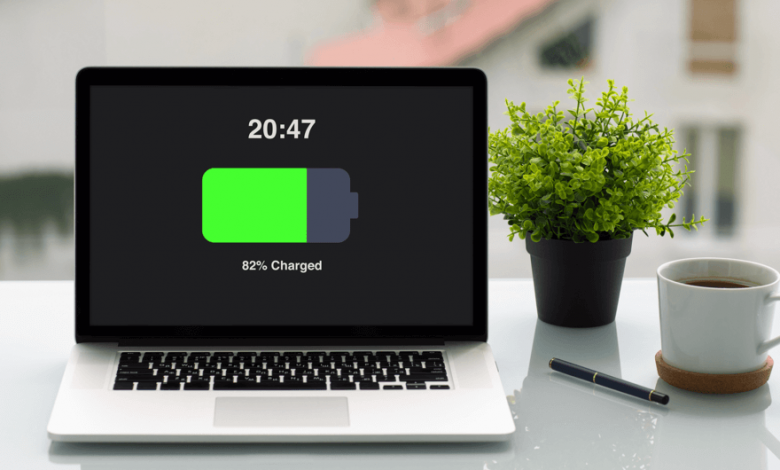Top 7 Best Tips To Increase Your Laptop Battery Life

As more laptops are becoming powerhouses in a tiny footprint, it takes a toll on the battery life. This can be quite disappointing as even the best batteries eventually run out forcing the user to get plugged into a power outlet which can sometimes cause a lot of inconveniences.
Fortunately, recent laptops are much more power-efficient when compared to previous generations and now they have higher hours of battery life advertised by the manufacturer. However, not many laptops can last as long as advertised except you take into account a lot of key details that affect your battery life like how many apps you run, your power settings, or even the temperature of where you use the laptop.
Luckily, you can still improve your laptop battery life without much effort so far you know what settings to tweak. And without wasting much of our time, let’s get right into the top 7 best tips to increase your laptop battery life.
1. Avoid killing your battery
This is a very important thing if you want to extend your laptop battery life. So always avoid discharging your laptop battery fully so you can have a good battery life.
Many batteries have a specific number of charge cycles and once you get past it, your battery would start to degrade as you charge and discharge. As a result of this, try your best to avoid discharging your laptop frequently.
2. Use the power-saving options
Most laptops, whether Macs or Windows, have a built-in power management system that you can use to increase your battery life.
If you’re on Windows, it can be accessed by a slider from the battery icon in the taskbar in Windows 10, and can be accessed by going into Settings > System > Power & Battery > Power Mode in Windows 11. The modes available are Best Performance, Better Performance, Better Battery, and Battery Saver.
If you’re on Mac, it can be accessed by opening the System Preferences app and clicking on Battery in macOS Monterey. There are different options for you to tick from and they can help improve the battery life of your laptop.
If you use a recent Mac, you may see the Energy Mode setting in the Battery section and it contains three options: Low Power mode which reduces energy use to improve battery life, Automatic mode which lets your Mac choose the optimal performance level, and High Power mode which prioritizes performance over battery life.
3. Avoid overheating
Heat is a big problem in most mobile electronics today, it is a factor that reduces the laptop battery life and can even make your battery get bad faster. So, always make sure you keep your laptop cool.
If your laptop has a fan, try to make sure you use it on a flat and firm surface like a table so the airflow is not restricted. Also, make sure your laptop vents and fans are not clogged by dust (you can use an air blower to clean the fans and vents).
4. Turn off some hardware
You may not know this but services like Wi-Fi and Bluetooth come with separate hardware that contributes to power draining.
If you don’t have much juice left on your laptop and want to get the best battery life, you can turn off Wi-Fi and Bluetooth if you are not using any of them. This is not going to miraculously make your battery last forever but it helps a bit.
5. Reduce your screen brightness
The screen is one of the major power consumers in a laptop and it consumes more power as the brightness is increased.
If you want to get more out of your battery, you can reduce the brightness of your laptop’s screen. Set a lower level that is still quite visible, and disable adaptive brightness if your laptop has it turned on.
Reducing the brightness of your screen will surely help to improve your laptop battery life in a significant way.
6. Get rid of heavy apps
There are lots of heavy apps that constitute high power usage on laptops and a way for you to improve your battery life is by getting rid of them. Some of these apps even run in the background without you knowing.
To get rid of them, you can go to the famous Task Manager on Windows and disable ones with high power usage from there. On Mac, you can just close apps that you’re not using at the moment.
Also, take note of the web browser you’re currently using as they usually consume a lot of power. Avoid having a lot of tabs open at the same time as it consumes a lot of RAM and power together.
7. Change your graphics and display settings
If your laptop comes with a discrete GPU then you can change your laptop’s settings so that it is only used for graphics-intensive tasks. This will make sure that the GPU only consumes power when it is being used actively by a powerful app.
To do this, go to the GeForce control panel on your Windows laptop (if it uses Nvidia GeForce GPU), then click on the Program Settings tab to choose which apps can have access to the discrete GPU.
As a tip, only apps that actively need a discrete GPU to perform well should have access to the chip like video and photo editing apps, games, and other graphics-intensive apps.
If you have a Mac, you can turn on “Automatic graphics switching” in the Battery preferences pane on recent Macs. It will make macOS automatically help you switch between the discrete GPU and internal graphics based on which apps you’re using.



